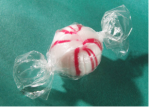 Although the NHS recommend breastfeeding for at least a year, and the World Health Organization for two years and beyond, I’m well aware that Western culture doesn’t really allow for this. Thanks possibly to hard-line health awareness campaigns, it now seems generally acceptable to be seen feeding very little babies in public, but it’s also still acceptable for people to vociferously object to anyone breastfeeding an older child. Gauging the point at which breastfeeding goes from ‘good’ to ‘bad’ is a tricky business, however. When does your gorgeous little infant suddenly lose their innocent penchant for breast milk, and turn into an ‘older child’, apparently in danger of being psychologically damaged by continued nursing?
Although the NHS recommend breastfeeding for at least a year, and the World Health Organization for two years and beyond, I’m well aware that Western culture doesn’t really allow for this. Thanks possibly to hard-line health awareness campaigns, it now seems generally acceptable to be seen feeding very little babies in public, but it’s also still acceptable for people to vociferously object to anyone breastfeeding an older child. Gauging the point at which breastfeeding goes from ‘good’ to ‘bad’ is a tricky business, however. When does your gorgeous little infant suddenly lose their innocent penchant for breast milk, and turn into an ‘older child’, apparently in danger of being psychologically damaged by continued nursing?
Many people I know have given me their opinion on breastfeeding beyond this (as yet undefined) ‘baby’ stage.
After a television programme on extended breastfeeding, a fairly inebriated friend of my husband held forth about how how unpleasant it was to see people breastfeeding children (which doesn’t entirely explain why he spent an hour watching it on television). It wasn’t clear why he held this view, but the fact he is an avid reader of such publications as The Sun, Nuts, FHM and Maxim perhaps gives some indication of his attitude towards, and personal interest in, breasts. ‘Surely it’s got to do some long term psychological damage – f*** up your attitude towards breasts,’ is an argument that is wheeled out quite frequently (as demonstrated in this discussion of Nell McAndrew’s decision to breastfeed her toddler), although interestingly, I’ve yet to hear it from a woman. It is of course possible to turn this argument on its head – in many other countries, breasts are viewed as primarily practical, rather than sexual, so if you must view these things in black and white, you could argue that this is the ‘right’ way round – but such men seem strangely unreceptive to this possibility.
The idea that a child may be negatively affected by a memory of breastfeeding is another charge that comes up quite frequently. I’ve never got to the bottom of quite why this would be the case, but it seems, again, to be to based on the premise that breasts are for grown-ups, and getting them out for children is slightly suspect.
I had a recent discussion about feeding older children with a couple of very good friends, and although a concrete age was never mentioned, the topic came up when I started to breastfeed C, who is now nine months old. Although obviously still a baby (she can’t yet walk), she is able to sit up, wave, clap and generally communicate. It’s presently quite unusual for babies in Britain to still be breastfed at this point – according to the latest Infant Feeding Survey, only 20% of mothers make it to nine months. The timing of the conversation may have been entirely coincidental, of course, and nothing to do with me giving C an afternoon snack, but I found it hard to dismiss the thought that there was a coded message in there.
I’ve since talked to my friend about this, and while she was adamant this wasn’t the case, she also admitted she has a bit of a problem with breastfeeding toddlers. When she asked me how long I was planning to feed C, I said I wasn’t sure, but I couldn’t dismiss the possibility of continuing for another few months. She understood my reasons for this, and agreed that this was, in theory, a positive thing, but it clearly wasn’t something she felt entirely comfortable with. I’m ashamed to say that it isn’t something I feel entirely comfortable with either. The idea of feeding C (behind closed doors) is lovely, but the thought of admitting to anyone that I’m ‘still’ doing it is less appealing. I am, however, convinced that this is something I have to address: it isn’t much good complaining about our society’s attitude to breastfeeding, unless I’m prepared to challenge it myself.
 Many years ago, breast milk was thought to be sterile. While this is far from being the case (it actually contains all manner of germs
Many years ago, breast milk was thought to be sterile. While this is far from being the case (it actually contains all manner of germs Up to 90% of women experience nipple pain or soreness in the initial stage of breastfeeding, with the pain peaking in the first week, then gradually subsiding
Up to 90% of women experience nipple pain or soreness in the initial stage of breastfeeding, with the pain peaking in the first week, then gradually subsiding There are many substances said to prevent or relieve nipple pain and damage during the early days of breastfeeding, including
There are many substances said to prevent or relieve nipple pain and damage during the early days of breastfeeding, including 